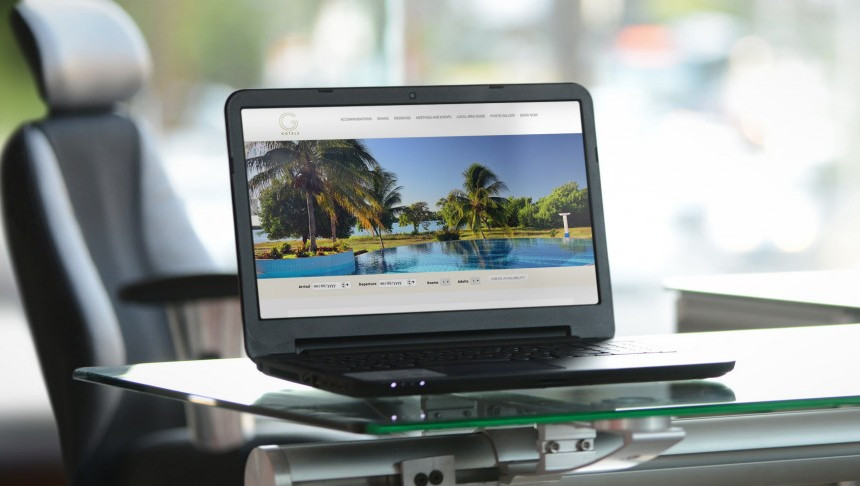
HeBS Digital shares this checklist to maximize revenue through your online media budget
With the digital landscape constantly growing and the hospitality industry transforming to make room for new technology, running successful, revenue focused digital campaigns is becoming even more of a key to success in hotel marketing.
Traditionally hoteliers have considered online media a branding initiative – one that could only be supported with major budgets. Today, online media can be used as a direct response initiative to generate bookings by utilizing Dynamic Rate Marketing and tying campaigns to concrete packages and promotions.
The advertising world is also seeing major growth in digital display, with U.S. digital ad spending expected to surpass television spending in 2016. Mobile is the fastest growing sector, accounting for 51% of revenue, an increase of nearly 430% from 2013.
Coupled with advancements in technology, hotel marketers have a new opportunity to invest in higher converting campaigns with smarter targeting capabilities. This allows them to reach potential guests at the right time in their travel planning journey, in turn generating higher returns.
Here is the checklist to maximize revenue through your online media budget.
1. Online media’s share of the 2016 digital marketing budget should be at least 15%.
Allocating the correct amount of budget to display advertising is crucial to be able to take advantage of growing trends and emerging targeting technologies, and to reach potential guests in their travel planning journey.
Dedicating 15% of your budget to online media allows you to run a comprehensive campaign on high-performing digital networks such as Sojern, Adara, and TripAdvisor.
2. Take advantage of the two fastest growing sectors of online media: mobile and video:
With video ads growing by 35% and digital ads on mobile jumping 76% year-over-year in 2014 (Comscore), incorporating these mediums in your online media efforts is critical to staying ahead of the curve and achieving maximum success.
Mobile: Travel planning is no longer taking place on just one device. Nine out of ten people move from one device to another while planning travel, with 65% starting on their smartphones (Google Research). Cross-device campaigns allow you to serve ads at multiple touch points and ensure that you stand out to potential guests during the travel planning journey.
Simply resizing your display ads will not allow you to utilize mobile display to its full potential. Integrating a “Click-to-call” option or a “Remind me” button customizes your mobile advertising to the smart phone and allows a user to interact with an ad in a way they might not have on desktop. Great mobile ads are a result of creativity and technical ingenuity.
Video: One way to easily and effectively incorporate video into your online efforts is with YouTube TrueView, which allows you to reach targeted audiences with video ads on the Internet’s second largest search engine.
Additionally, with more than half of YouTube views coming from mobile devices, this is a great way to boost your brand presence on mobile. TrueView allows two options to display ads. In-stream ads, which appear before YouTube videos, only charge once an ad has been watched for 30 seconds or more. TrueView in-display ads appear alongside other YouTube ads within search pages.
These ads are less visually striking and charge on a click-by-click basis.
3. Launch online media as one component of a 360 degree, multi-channel approach.
Multi-channel campaigns are a proven way to boost revenue during low seasons, target top customer segments, and fulfill ad hoc business needs.
With the average travel consumer’s journey including at least 18 site visits before making a booking (Google Research), it is important to reach a traveler at each touch point in the planning process, and promote a cohesive message across all channels.
Be sure to also include retargeting within your campaign. Retargeting ensures that you capitalize on the traffic directed to your site. According to Digital Information World, users who are retargeted are 70% more likely to convert.
An effective multi-channel campaign strategy should learn from past results and industry trends, placing the customer at the core of every marketing initiative and every brand moment to not only win the booking, but also to maintain the customer relationship long after the campaign ends.
4.Devise an online media plan to address occupancy needs, seasonal needs, and peak online shopping periods, such as Cyber Monday and Memorial Day.
An effective online media plan increases traction during the times when your property needs it most, including major online spending and travel research times, such as Cyber Monday and Memorial Day.
Allocate a flexible budget to seasonal or holiday-specific campaigns to make a strong impact and build exposure for the duration of the campaign while effectively competing with your comp set for share of voice and market share.
For example, Cyber Monday campaigns should include pre-sale and post-sale phases, with a sale extension to give family and friends more time to spread the word and capitalize on the special offer. By offering an extended sale you can allow your display campaigns the opportunity to run more impressions and increase return on ad spend (ROAS).
Hoteliers can also utilize targeting strategies like remarketing to reach the 92% of website visitors that may never return (EyeforTravel).
5. Run online media campaigns with a direct-response focus.
There are two primary varieties of marketing strategies.
The first is commonly known as “branding.” The goal when branding is to build brand awareness among potential guests.
While a branding campaign should be worked into bigger budgets, most hoteliers will want to focus on Direct Response initiatives.
In hospitality, more so than in many other industries, Direct Response marketing is necessary since travelers are taking action online and hoteliers can track online bookings and ROAS to gauge the success of their marketing efforts.
When focusing on Direct Response marketing, HeBS Digital suggests running a Dynamic Rate Marketing campaign to promote real-time rates available on the hotel website and ensure that users visiting TripAdvisor can book directly with the property.
These initiatives will help to convert travel planners deeper in the purchase funnel for more direct bookings.
6. Maintain an average ROAS of 1000% from your direct-response online media campaigns.
By utilizing advanced targeting techniques such as retargeting, intent targeting, and geo-targeting, hoteliers can achieve an ROAS of 1,000% or higher.
A highly optimized and smart plan also factors in the hotel’s occupancy rate, average daily rate, and budget.
Read rest of article at: Hotel News Now




